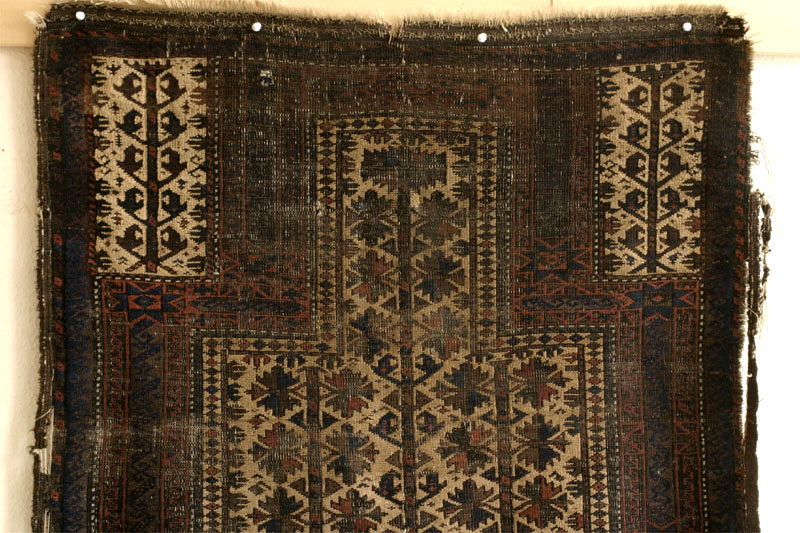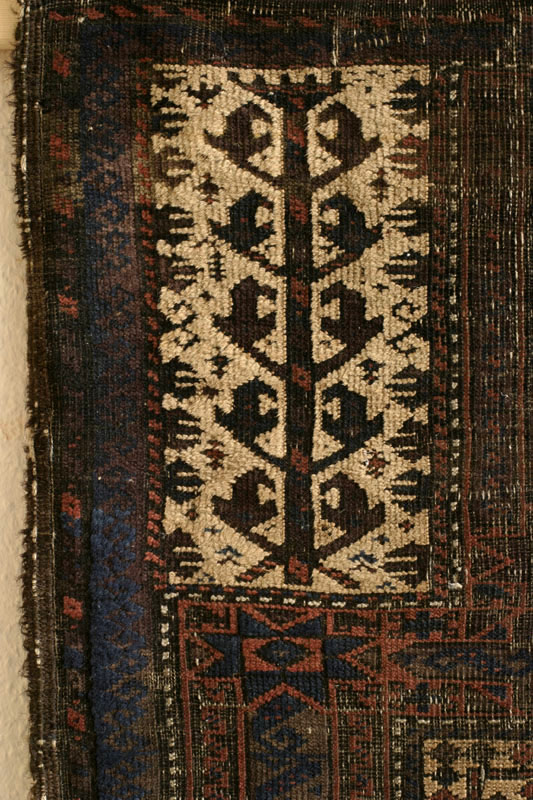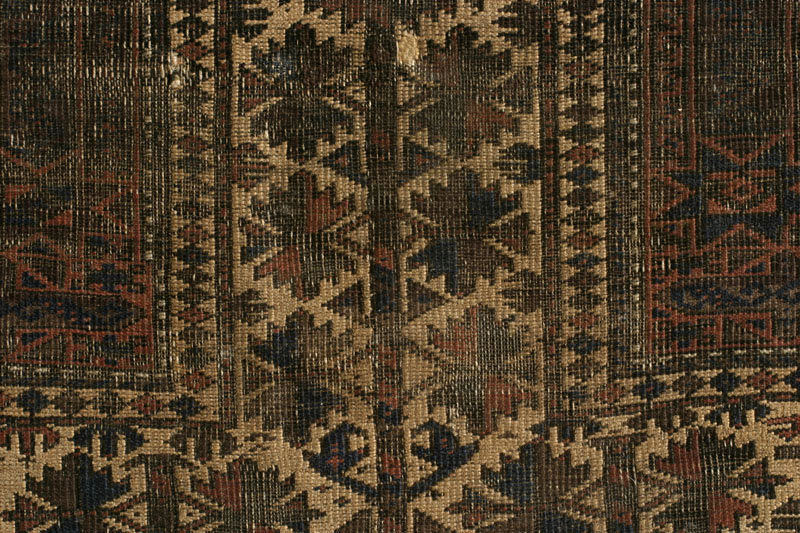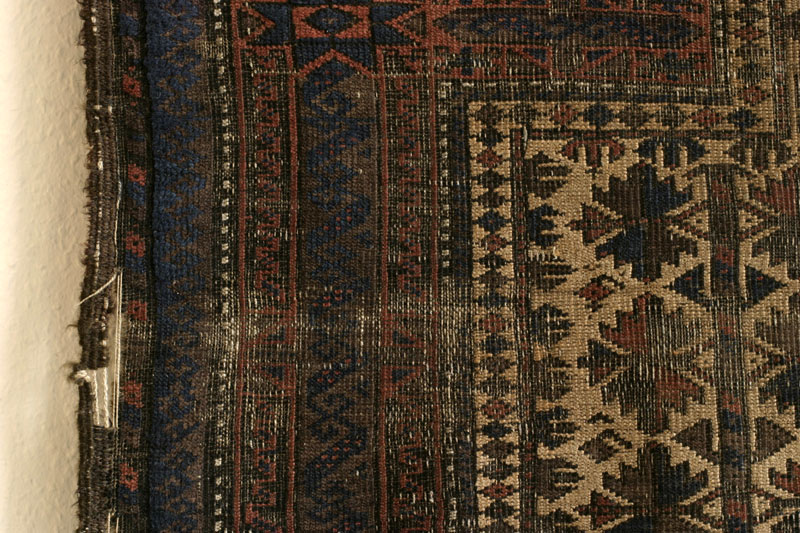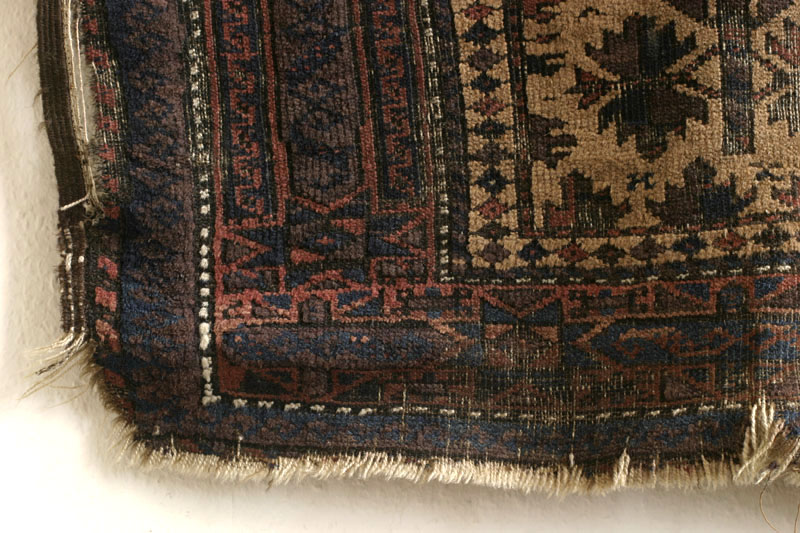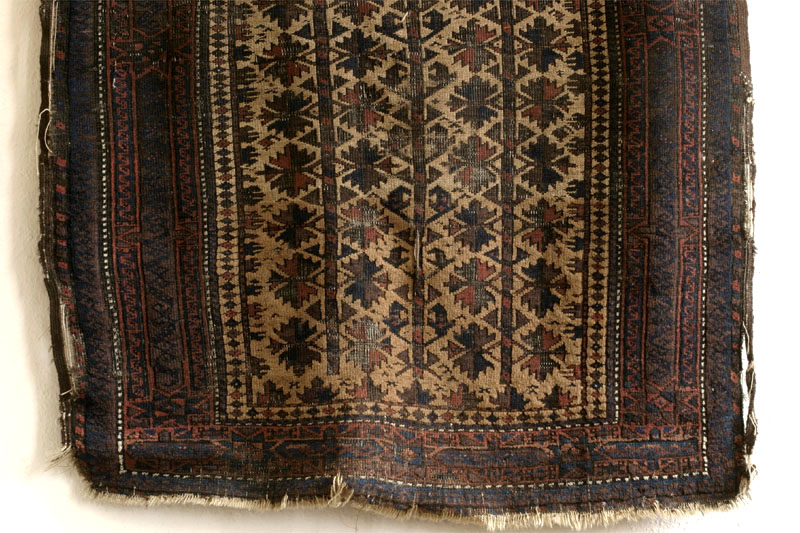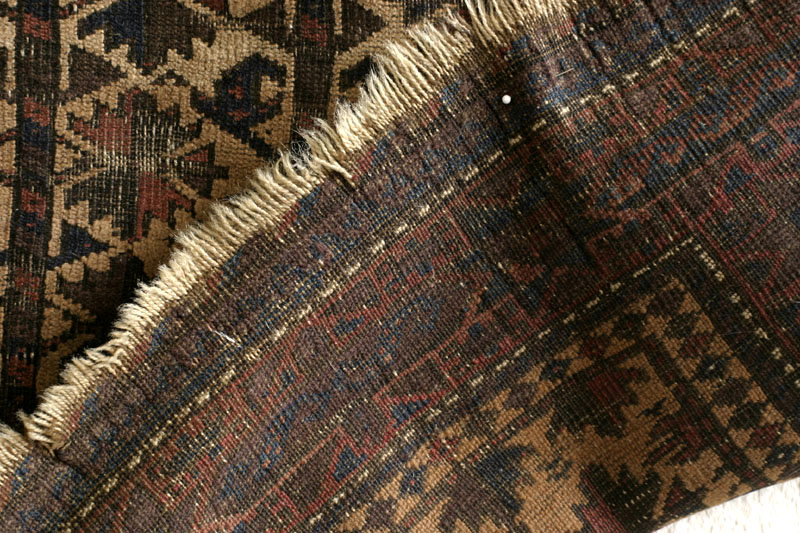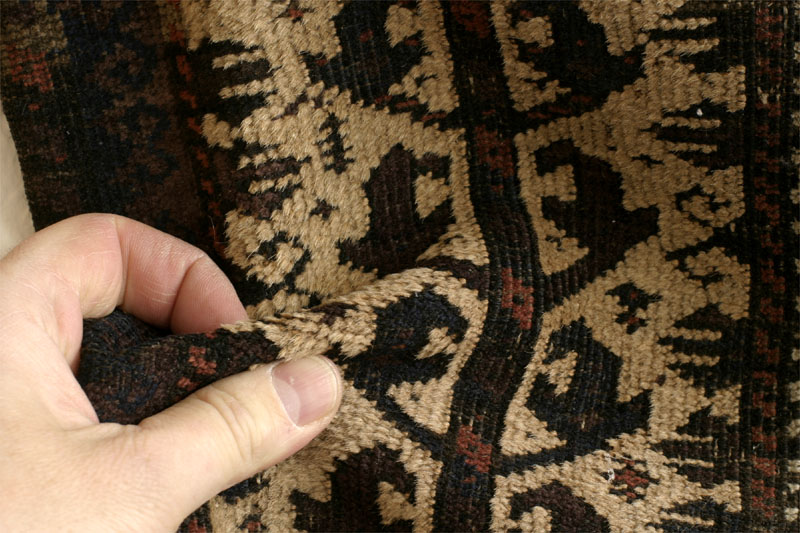Old 'tree-of-life' type prayer rug with subtle design and excellent colours on camel-coloured ground, maybe real camel wool, heavily worn in parts and with partly disconnected selvages.
The camel-coloured abrashed field has a so-called "tree-of-life" design with three trees. While the two outer trees show the typical serrated quatrefoil leaves variously in red-blue and aubergine-blue extending from barber-pole type stems with coloured segments, the central tree differs in that it shows small triangular studs and branches beset with an angular pincer or pipe-like motive that I cannot clearly identify. Its top is tilted like that of a boteh, but it grows from a base that points outwards and upwards symmetrically. Perhaps this shape represents buds?
In the mihrab, the central tree shows the same serrated leaves as the flanking trees, crowned by a large serrated shield-like leaf (?). Around the trees, the field has various tiny filler motives and irregularly placed fork-like motives extending inwards from the sides.
The dark border system running around mihrab and field but leaving out the spandrels is nicely structured through eight-pointed stars that integrate two small meander borders flanking a slightly wider central border that shows a beautiful meander band with a reciprocal hook or ramshorn pattern with tiny red highlights. In the bottom border, the room between the stars is filled by elongated cartouches containing s-shapes. A further reciprocal blue-on-brown ramshorn border with a nice abrash in the maroon brown, and a thin striped outer border run all around on the outside.
The spandrels contain small trees featuring the same bud-shaped forms on their branches, as well as the same tiny rhombic filler and fork-like flanking motives as the field. Halfway down, small ramshorn motives extend inwards from both sides. Many small variations (note for example the difference between the tree stems, crown, and filler motives of the spandrels) demonstrate the integrity of this piece, so it may not be one of the thousands of Baluch prayer rugs that have been produced for export. I guess this piece is quite early, from the second half of the 19th century.
The rug measures 4ft x 2ft.8in (123cm x 85cm). The structure is all wool, the handle is firm and flexible like a thick cloth. The weave is fine, tight and even, with no warp depression, asymmetrical knots open to the left, 9 knots/inch horizontal x 13 knots per inch vertical (ca. 104 kpsi). Warps are s-plied off-white wool, two wefts of very thin single strands of grey-brown wool. The four-cord selvages are wrapped in soft brown wool, probably original, largely complete but unravelled in the top right corner, and disconnected from rug in several places. The top kilim shows two largely intact bands of intricate weft-float brocading.
The colours are all natural: the light camel coloured ground that has an abrash to a slightly darker tone in the bottom third; dark saturated indigo and black-indigo also used for outlining, dark brick red verging towards a lighter brick orange in a view places; a warm dark maroon brown with some beautiful abrash, and a beautiful aubergine tone.
The condition is uneven; some parts of the rug have very good and lustrous short-clipped pile, others show heavy wear, especially across a horizontal band in the upper half just below the mihrab, and in the mihrab and surrounding border. Especially here in the border, the foundation shows and the design can no longer be read from the front. The brown and blackish-blue are corroded, especially in wear areas, e.g., in the serrated leaves of the field. The spandrels and most of lower half of the rug are in good shape, apart from the selvages that have become partly detached from the rug, some corner rounding, and the loss of most of the bottom end kilim (just half an inch remains). Near the bottom, there are two small areas of wear where not just pile but also wefts have been worn out. One froms a two inch slit visible from the front along the central stem: a few warp threads have become loose and are visible. Should not be difficult to repair. There is a small area of dark brown repiling in one if the leaf groups in the field and a fingertip size area of repiling of the camel coloured wool just below the shield crowning the central tree. The bottom has a one inch long upwards tear, the top one of about half an ich, barely visible. In the topleft border going around the mirhab, there is a small fingertip-sized hole with the material still existing. Otherwise the structure is sound and strong, no rot, no stiff areas, stains or glue.
